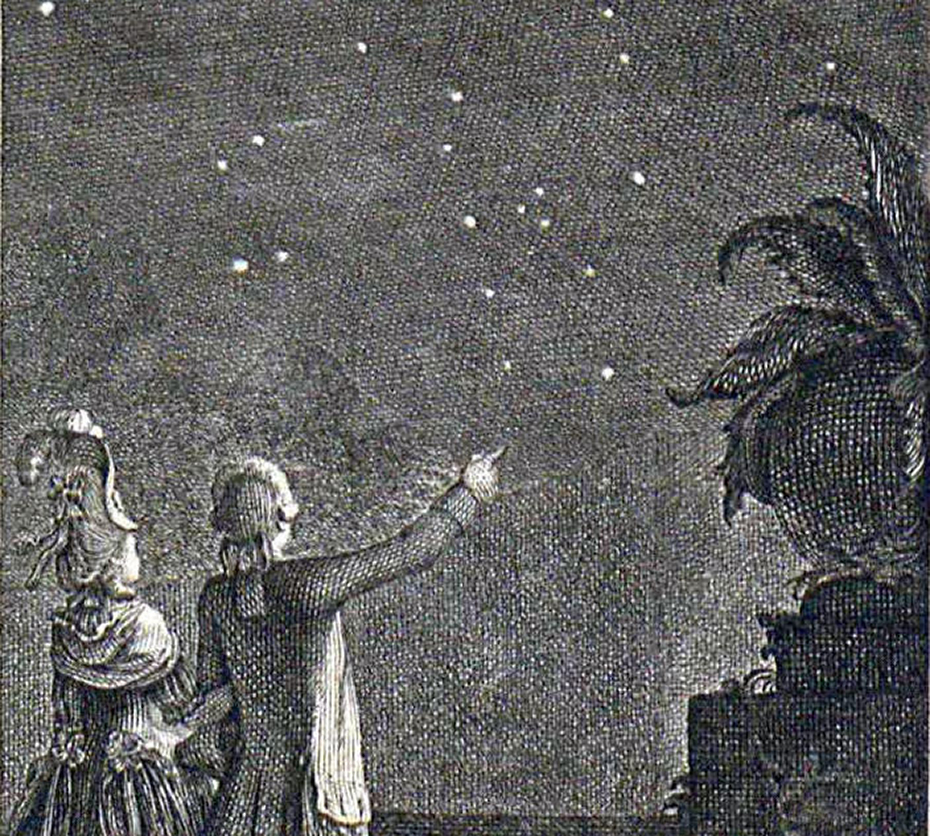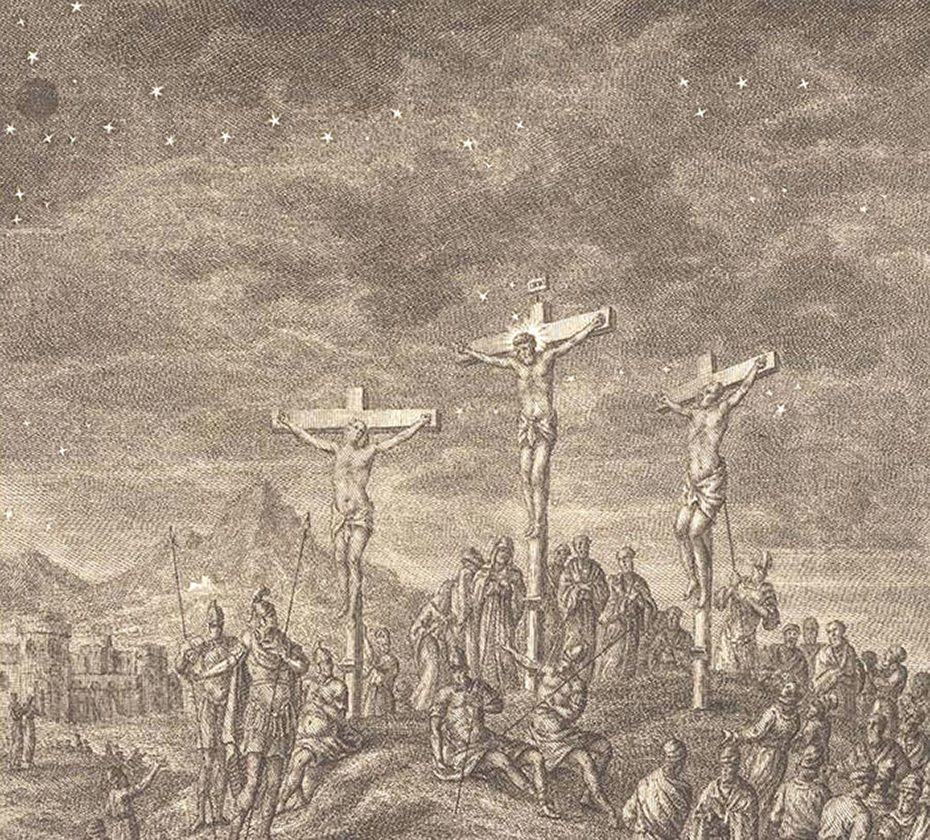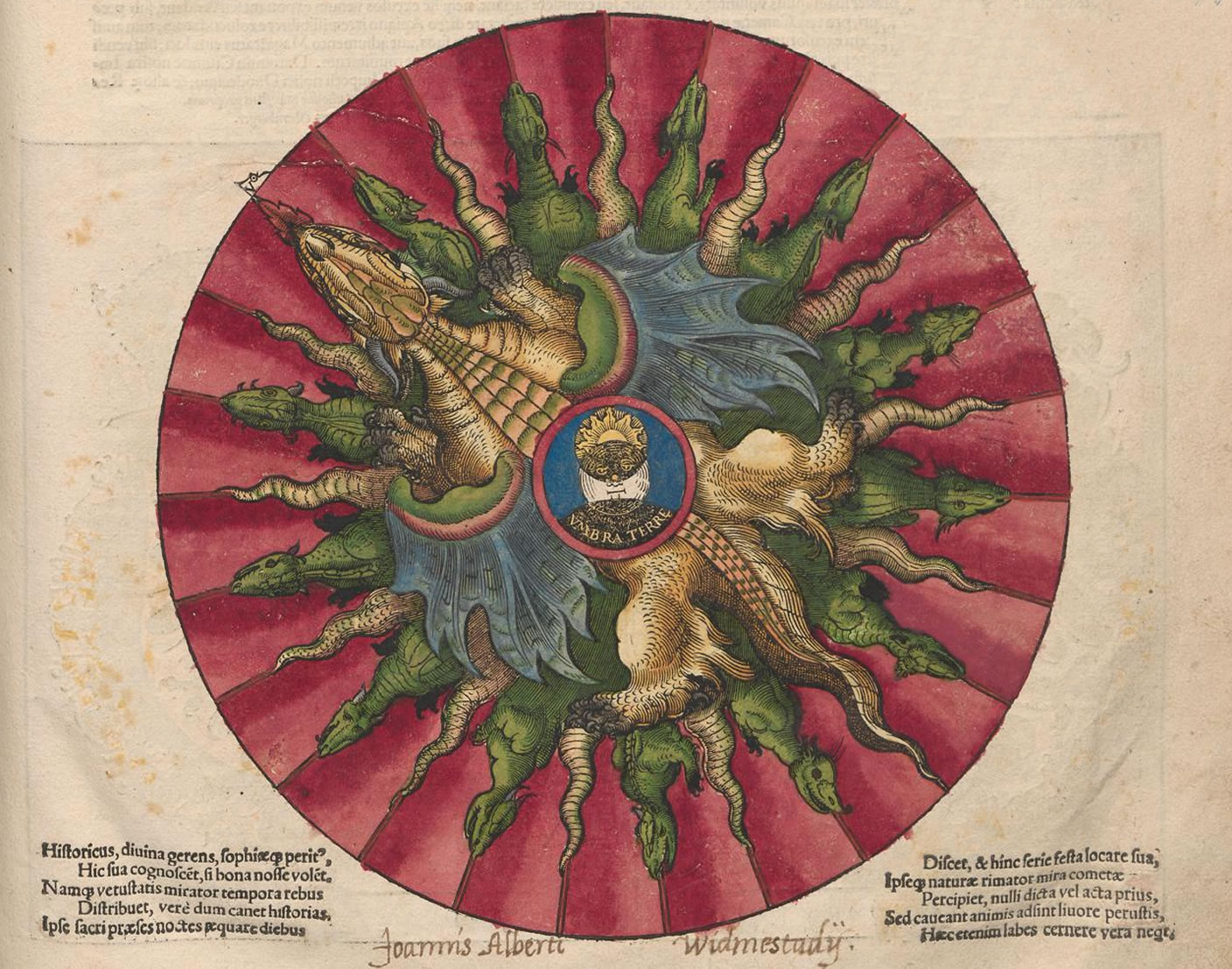Solar eclipses as a symbol
Solar eclipses and superstition
Many ancient civilisations regarded and feared solar eclipses as supernatural apparitions. People considered them omens of pending doom or believed the sun was being attacked by hostile demons.
In his book entitled "external page Entretiens sur la pluralité des mondes" (London, 1761), Bernard Le Bovier de Fontenelle mentions that there was a belief throughout Eastern India that an evil monster threatened the sun during a solar eclipse. Consequently, during such an event rivers full of Indians standing up to their necks in the water could be seen, which was deemed a devout and appropriate way to urge the sun to put up a courageous fight.
In other civilisations, it was common to scare away the demons threatening the sun by screaming and making noise. It was also customary to cover fountains during solar eclipses to protect people against poisoning.
These superstitious views were not always adverse. Sometimes, they even had positive consequences. As Hermann J. Klein writes in "Die Sonnen- und Mondfinsternisse" (Kreuznach, 1870):
A similar superstition is documented far more recently. François Arago explains that the announcement of a solar eclipse in Paris and the surrounding area in the seventeenth century spread such terror that the priests could not cope with the flurry to the confessional box.
Solar eclipses as a stylistic chronicling device
The natural spectacle has often been associated with key events. Solar eclipses have even been fabricated by chroniclers to stress the importance of certain events (battles, the birth or death of a king).
Atmospheric hazes have sometimes been confused with solar eclipses. These include the "eclipsis passionalis", the eclipse at Christ's crucifixion, which is portrayed by the evangelists Mathew, Mark and Luke, and depicted so impressively in external page Johann Jakob Scheuchzer's "Copper Bible". In truth, no evidence of this solar eclipse has been found.
Solar eclipses and mythology
The disappearance of the sun and the moon during solar and lunar eclipses has also been explained purely mythologically: people supposed that a dragon devoured the sun and the moon before eventually releasing them again, which is why the intersections between the ecliptic – the plane in which the earth moves – and the lunar orbit are still referred to as the "head and tail of the dragon" to this day as eclipses can only occur in their vicinity. The timespan between two moon passages through the dragon's head and tail is also known as the "draconic month".


